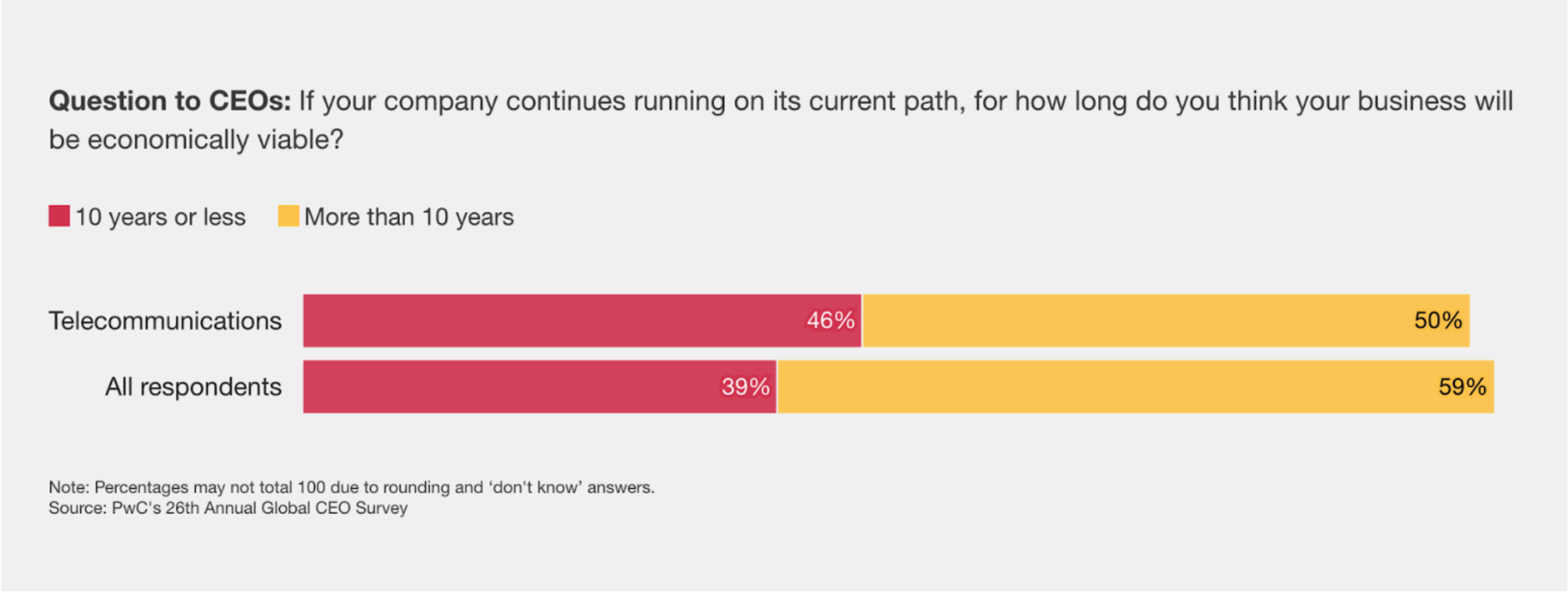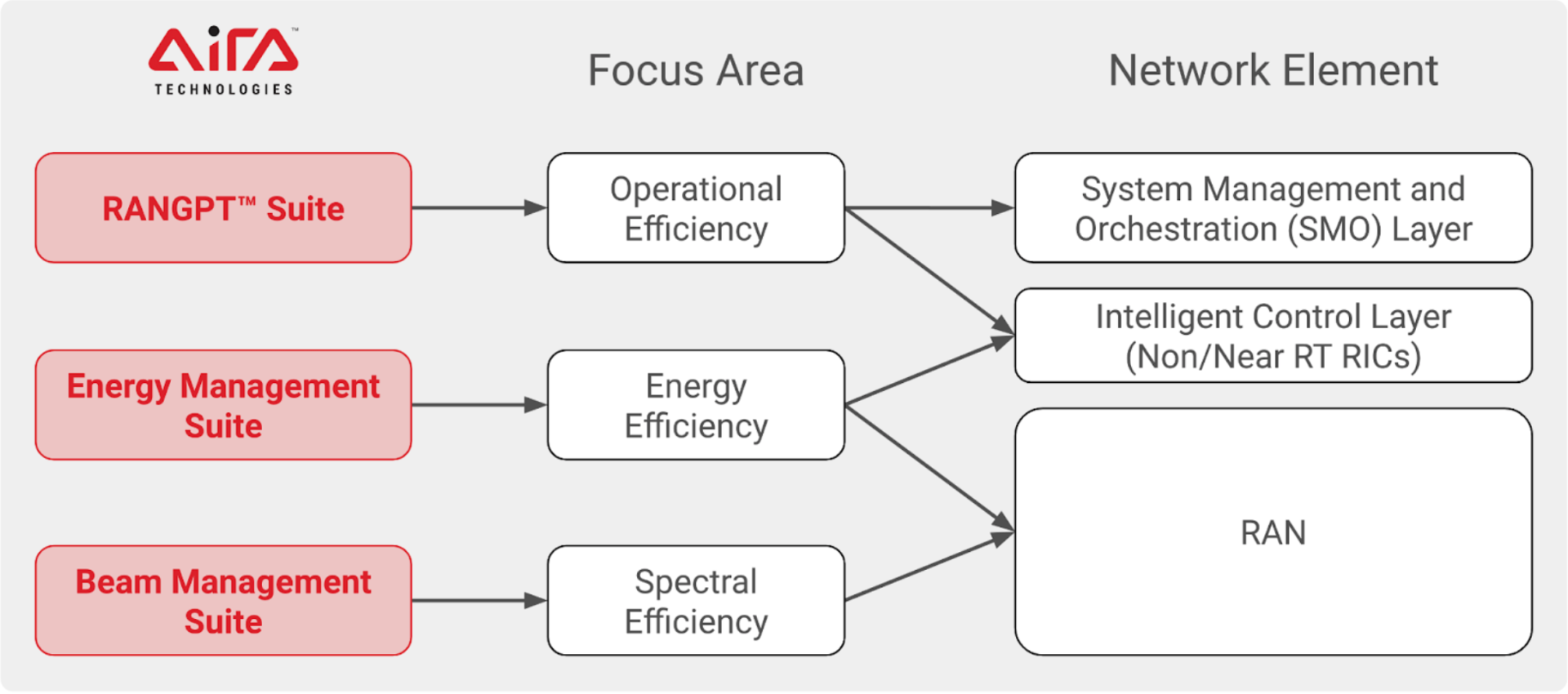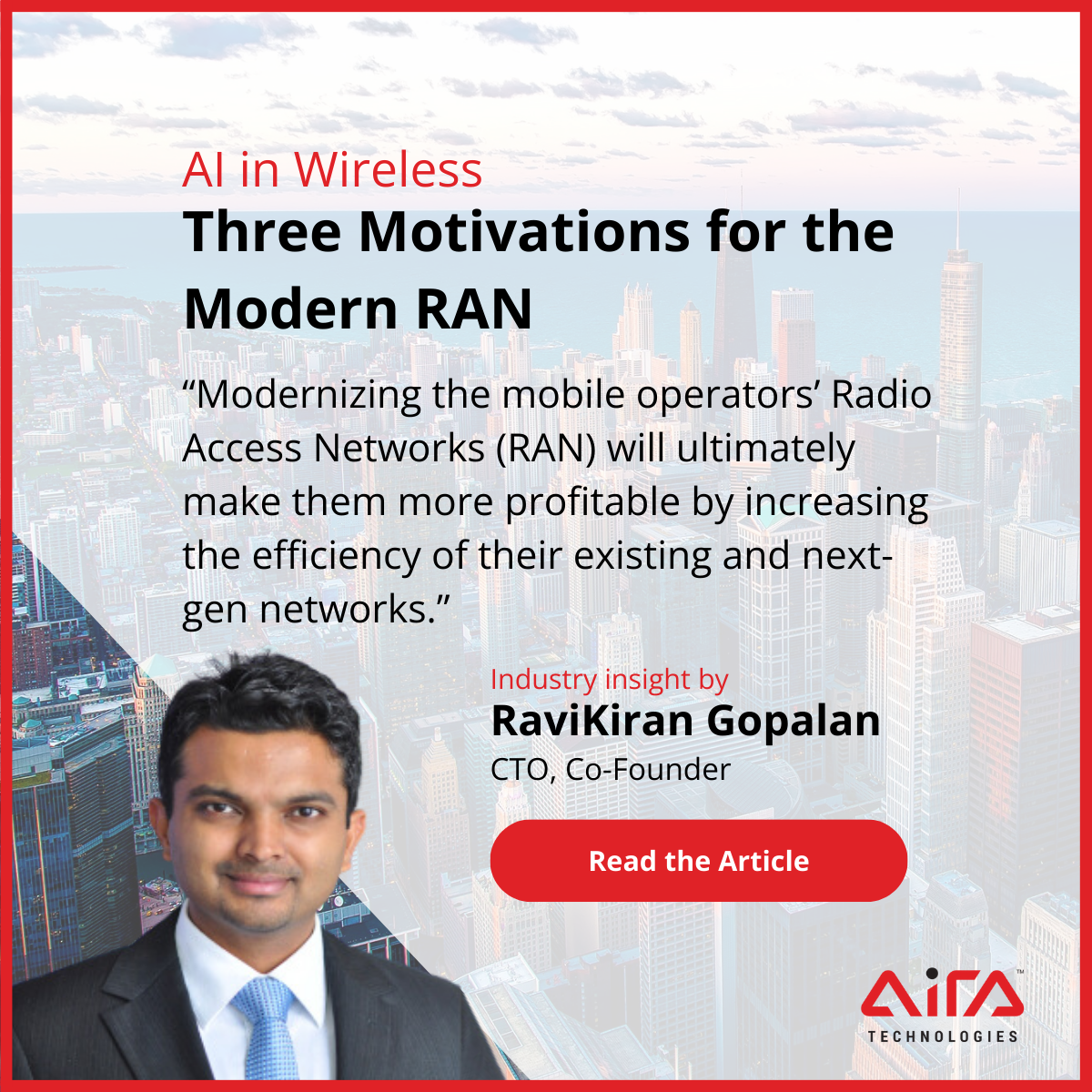Mobile Network Operators (MNOs) are in a world of hurt and many of them are concerned about their continued existence.

Their customers are consuming more and more data, creating exponential growth in traffic. To meet this demand, the MNOs have spent billions in shifting to 5G but the promised gains haven’t materialized. Worse, their customers expect to pay less and get more.
However, all is not lost. Telecoms, after all, control the infrastructure and have access to all of the data generated by their networks. Modernizing the mobile operators’ Radio Access Networks (RAN) will ultimately make them more profitable by increasing the efficiency of their existing and next-gen networks. In this article, we will delve a bit deeper into the motivations for a modern RAN.
What is the RAN?
RAN, short for Radio Access Network, is a more technical term for what’s commonly called a cellular network. It is the connection between your phone and the Internet. The three main components of the RAN are:
- The Radio: This is the most visible part of the RAN. These are the white boxes you see sticking out of poles as you drive along the highway. The radio receives high-frequency (GHz) analog signals from your phone, digitizes them and converts them into a time-frequency grid that can be analyzed by the Base Station.
- The Base Station: This is typically a large appliance inside a climate-controlled box at the base of the radio tower. This is often a custom-asic (a specific-use chip), performing low-latency signal processing to convert the time-frequency grid information from the Radio into bits. A server then maps these bits into packets.
- The core network: The core network deals with call processing—routing the bit packets between users and also the outside world.
How does the RAN look today?
There are two main parties in the RAN operations: the operators and the vendors. Operators design, deploy, and maintain the networks. They sell data plans to consumers and they manage billing. Examples of operators include AT&T, Verizon, and T-Mobile. Vendors supply the elements of the RAN stack to the operators, and examples include Ericsson, Nokia, and Samsung.
Most of the RAN around the world today is monolithic in that all of the elements of the RAN stack—Radio, BaseStation and the Core— come from the same vendor. Detrimentally, they do not interoperate with each other. A RAN stack from Ericsson will not easily interoperate with a stack from Nokia.
What are problems with the current, monolithic, approach to the RAN?
Several problems with a monolithic approach to the RAN include:
- Slow Innovation: Since operators must use all RAN elements from the same vendor, they are unable to seek out and use best-in-class RAN elements. From the vendors’ perspective, new and innovative vendors and startups who aren’t supplying the operators get locked out of the ecosystem. This means losing out on revenue and feedback on their latest products. Ultimately, this slows innovation in the RAN stack.
- Non-Transferable Automation: A monolithic RAN also slows down attempts to automate the RAN behavior. Currently, control and automation scripts written to control the RAN from one vendor do not interoperate with the elements from other vendors. So if Operator A (e.g., AT&T) decides to switch vendors (e.g., move from Nokia to Ericsson), it must re-write most of its existing control and automation scripts. This disincentivizes operators to automate and ultimately slows down the digitization and modernization of cellular networks.
- High Cost: The monolithic approach leads to a potential oligopoly of the RAN vendors, resulting in higher prices for operators.
How and why is the RAN being modernized?
Open-RAN is a movement to standardize the interfaces between key blocks of the RAN stack to make RAN fully interoperable. Open-RAN gave a blueprint for how the RAN should be modernized. From this blueprint, two key elements are seeing current adoption, as indicated by recent announcements from AT&T and DT: 1) Open Front Haul (FH), and 2) the Service Management and Orchestration (SMO) layer. Open FH is an open and standardized interface between the radio and the base station. This allows for a radio from Vendor A (e.g., Fujitsu) to interoperate with the base station from Vendor B (e.g., Ericsson). SMO is a standardized edge computing platform that hosts the RAN Intelligent Controller (RIC) which can run third-party applications to control the behavior of the RAN.
The benefits of a modern RAN are straightforward. Operators will be able to design their RAN by freely choosing the individual best-in-class elements of the RAN stack (benefit of Open Front Haul). They will also be able to control and automate the behavior of their networks, independent of the underlying stack (benefit of SMO).
What are Operators’ 3 motivations in modernizing the RAN?
Operators have 3 goals when modernizing the RAN.
- Operational Efficiency: Telecom networks generate a LOT of data. Operators are painfully aware that this data can be used to better design and better manage their networks and possibly even generate new streams of revenue. However, today this is easier said than done. At most operators, it takes two teams to generate insights from data. The first team knows how to ask the right questions, and then the second team writes the appropriate big-data code to answer the questions based on the data. Unfortunately, this process can be time-consuming and prevents quick experimentation and testing of ideas.Operators are looking for ways to put their data to use quickly and efficiently. They’re also increasingly looking to use a data-driven approach for a) Anomaly detection, b) Network Optimization, and c) Quality of Service Optimizations. Using network data to gain quick insights and drive improvements via iterative experimentation requires massive improvements in operational efficiency.
- Energy Efficiency: Reducing the “energy consumption per bit” via intelligent network energy management is one of the most critical objectives for MNOs as they try to manage their operational expenses (OPEX) of migrating to 5G. Multi-layer cellular 5G network deployment typically features coverage bands and capacity bands.There are instances when capacity bands are not utilized, and keeping them on leads to unnecessary energy consumption. Yet, for any given cell, there is an optimal active band combination that minimizes power consumption while still meeting the throughput demands of the users attached to the radio unit (RU). This is a non-trivial problem to solve since the throughput demands of the cell vary with time, and new cell configurations cannot be implemented frequently.
- Spectral Efficiency: Improved spectral efficiency (SE) has been a holy grail of cellular networks communications since their inception. 5G introduced MU-MIMO, which promises extraordinary gains in SE by having many users reuse the same time-frequency resources. However, MU-MIMO requires accurate knowledge of the users’ evolving channels.
How is Aira helping to Modernize the RAN?
Aira Technologies provides AI-powered solution suites to support Operators’ three motivations.

Aira knew that the technology to improve Spectral Efficiency would take time to mature, since it required deep integrations into the Base Station. So we started working on it first, back in 2021. The result is our Beam Management Suite, which improves spectral efficiency by >2X using AI to achieve:
- Improved channel estimation
- Channel prediction
- Accurate beam weight calculation
- Improved scheduling
Aira next worked on improving Energy Efficiency and released our Energy Management Suite in 2022. It improves energy efficiency by ~25% using AI to achieve:
- Efficient radio state management
- Optimized MIMO state configuration
- Optimized transmit power control
Finally, in 2023 Aira addressed Operational Efficiency with the RANGPT suite. RANGPT uses GenAI to improve operational efficiency by allowing network engineers to observe, analyze and automate their networks. Today, writing automations for the network can take many months. It is a long, complex task which follows a staid and rigid process. RANGPT reduces this duration to a few days by allowing network engineers to experiment and gain insights from their network data using a conversational, intent-based interface. Specifically, RANGPT is an intent-driven interface to:
- Observe and analyze the network
- Control the network
- Build, test and deploy simple automations (rApps)
- Interpret existing automations
- Build, test and deploy simple ML classification and detection models
We’re making strong progress in helping mobile network operators modernize their existing RAN. This helps them extract increased efficiencies from their existing and next-gen networks. I’ve detailed the motivations for a modern RAN in this post, and in the coming weeks we’ll publish in-depth articles about each of Aira’s solution suites.


